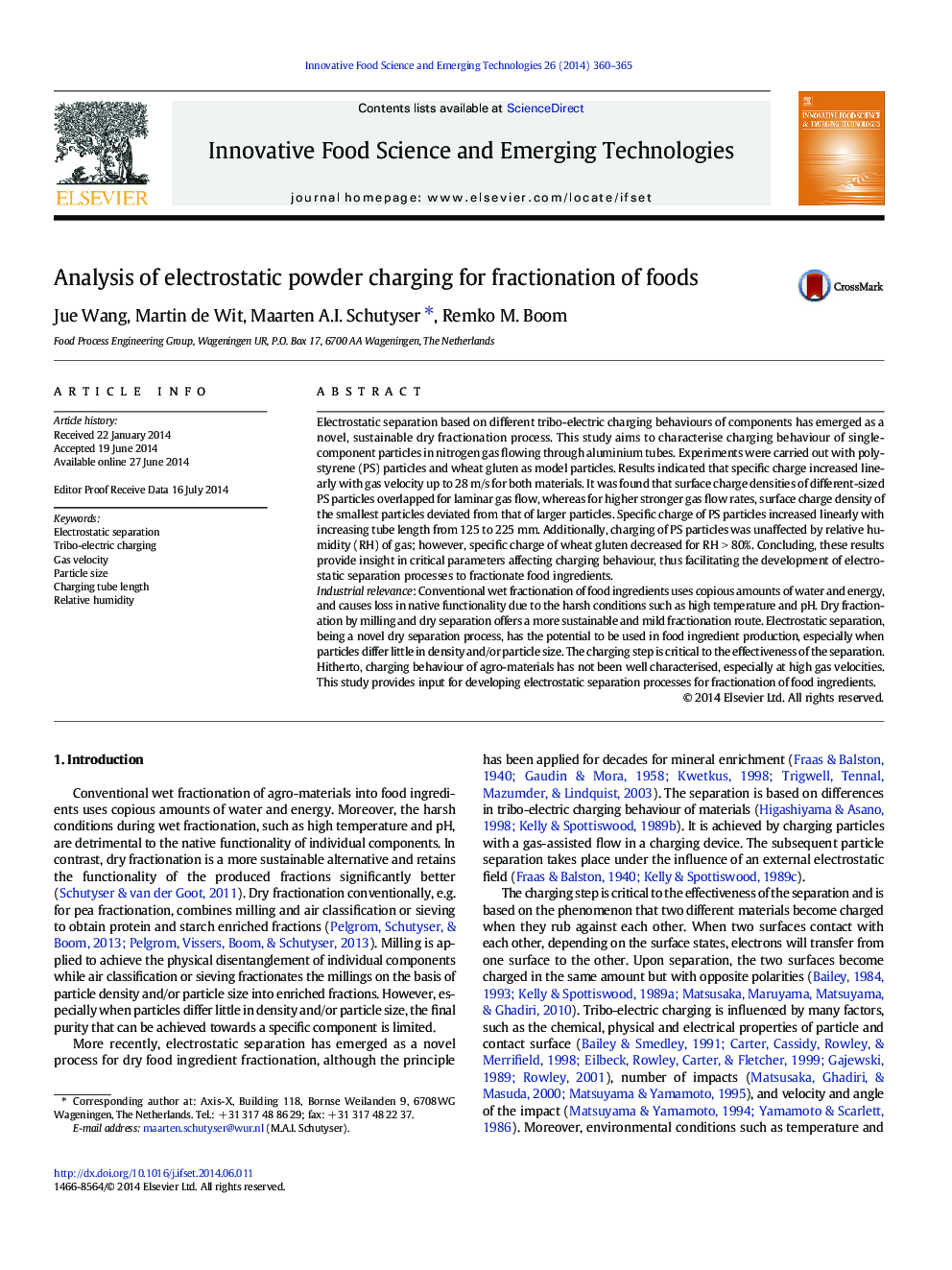| کد مقاله | کد نشریه | سال انتشار | مقاله انگلیسی | نسخه تمام متن |
|---|---|---|---|---|
| 2086690 | 1545540 | 2014 | 6 صفحه PDF | دانلود رایگان |
• Electrostatic fractionation is a novel route for production of food ingredients.
• Increased charging tube length provided more tribo-electric charging.
• Specific surface charge increased with gas flow velocity with laminar flow.
• Only at higher gas flow rates specific surface charge varied with particle size.
• Relative humidity of carrier gas only influenced charging of wheat gluten above 80%.
Electrostatic separation based on different tribo-electric charging behaviours of components has emerged as a novel, sustainable dry fractionation process. This study aims to characterise charging behaviour of single-component particles in nitrogen gas flowing through aluminium tubes. Experiments were carried out with polystyrene (PS) particles and wheat gluten as model particles. Results indicated that specific charge increased linearly with gas velocity up to 28 m/s for both materials. It was found that surface charge densities of different-sized PS particles overlapped for laminar gas flow, whereas for higher stronger gas flow rates, surface charge density of the smallest particles deviated from that of larger particles. Specific charge of PS particles increased linearly with increasing tube length from 125 to 225 mm. Additionally, charging of PS particles was unaffected by relative humidity (RH) of gas; however, specific charge of wheat gluten decreased for RH > 80%. Concluding, these results provide insight in critical parameters affecting charging behaviour, thus facilitating the development of electrostatic separation processes to fractionate food ingredients.Industrial relevanceConventional wet fractionation of food ingredients uses copious amounts of water and energy, and causes loss in native functionality due to the harsh conditions such as high temperature and pH. Dry fractionation by milling and dry separation offers a more sustainable and mild fractionation route. Electrostatic separation, being a novel dry separation process, has the potential to be used in food ingredient production, especially when particles differ little in density and/or particle size. The charging step is critical to the effectiveness of the separation. Hitherto, charging behaviour of agro-materials has not been well characterised, especially at high gas velocities. This study provides input for developing electrostatic separation processes for fractionation of food ingredients.
Journal: Innovative Food Science & Emerging Technologies - Volume 26, December 2014, Pages 360–365
